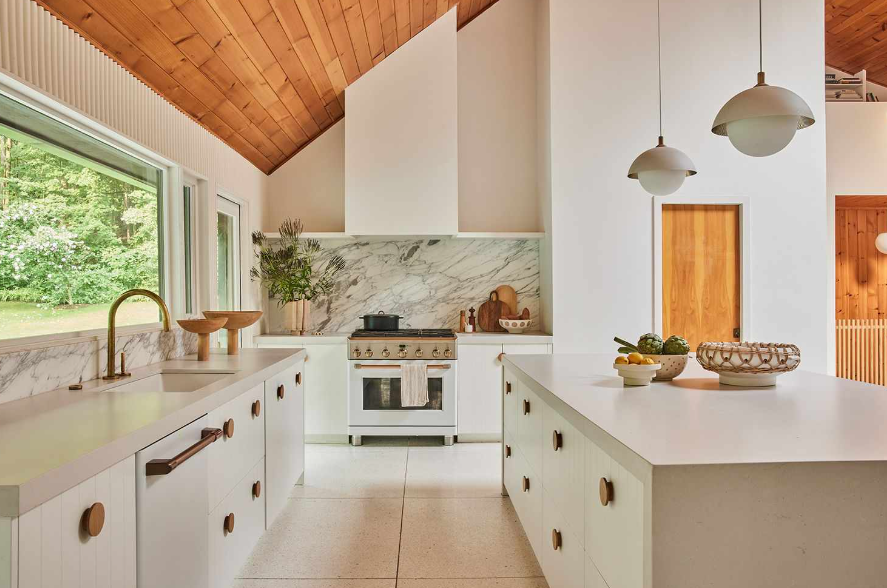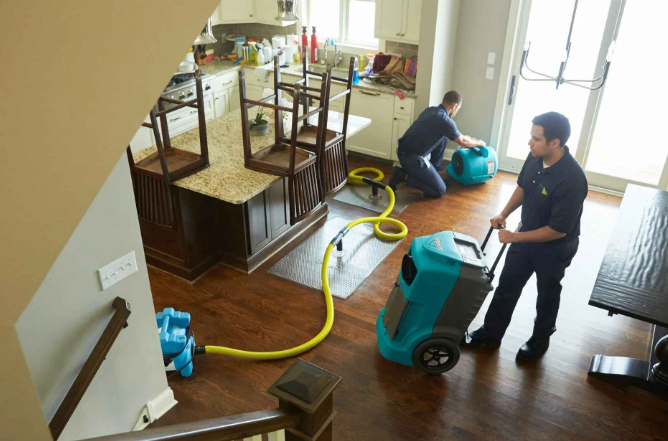
Introduction
In today’s fast-paced world, finding solace and tranquility within the confines of our homes has become more crucial than ever. One way to achieve this is by creating a vibrant and nurturing home garden. Whether you have a sprawling backyard or a compact balcony, designing a home garden can significantly enhance your living space while reconnecting you with nature.
Benefits of Having a Home Garden
Improves Mental Health
The act of gardening has been proven to reduce stress levels and promote relaxation. Spending time outdoors, tending to plants, and being surrounded by greenery can have a therapeutic effect on the mind, helping to alleviate anxiety and depression.
Provides Fresh Produce
Growing your fruits, vegetables, and herbs at home not only ensures a fresh and healthy supply of food but also allows you to control the use of pesticides and chemicals. Additionally, harvesting your produce can be a rewarding experience, fostering a deeper connection to the food you eat.
Enhances Property Value
A well-maintained garden can significantly increase the curb appeal and value of your property. Potential buyers are often drawn to homes with beautiful outdoor spaces, making a home garden a wise investment for the future.
Factors to Consider Before Designing a Home Garden
Before diving into the world of home garden design, it’s essential to consider various factors that will influence the success of your garden.
Climate and Weather Conditions
Understanding your local climate and weather patterns is crucial for selecting plants that will thrive in your environment. Consider factors such as temperature, rainfall, and frost dates when choosing plant species for your garden.
Space Availability
Evaluate the available space in your yard or balcony to determine the size and layout of your home garden. Consider factors such as sunlight exposure, access to water sources, and any existing structures that may impact your garden design.
Sunlight Exposure
Different plants have varying light requirements, so it’s essential to assess the amount of sunlight your garden receives throughout the day. Choose plants that are suitable for the light conditions in your garden to ensure their health and vitality.
Soil Quality
The quality of your soil will directly impact the growth and health of your plants. Conduct a soil test to determine its pH level and nutrient content, and amend it as necessary to create an optimal growing environment for your garden.
Types of Home Gardens
Home gardens come in various shapes, sizes, and styles, each catering to different preferences and purposes.
Vegetable Gardens
Growing your vegetables allows you to enjoy fresh, organic produce right from your backyard. Whether you have a large plot or a few containers, vegetable gardens are highly customizable and rewarding.
Flower Gardens
Flower gardens add color, fragrance, and beauty to your outdoor space. Whether you prefer vibrant annuals or delicate perennials, flower gardens are a delightful way to showcase your creativity and style.
Herb Gardens
Herb gardens are perfect for culinary enthusiasts who enjoy cooking with fresh ingredients. Whether you have a dedicated herb bed or a few pots on your windowsill, growing herbs at home is both practical and rewarding.
Fruit Gardens
Growing your fruits allows you to enjoy the taste of freshly picked fruit right from your garden. Whether you opt for traditional fruit trees or compact berry bushes, fruit gardens are a delicious addition to any home.
Designing a Home Garden Layout
Creating a well-thought-out garden layout is essential for maximizing space, promoting healthy plant growth, and enhancing visual appeal.
Planning and Sketching
Start by sketching out a rough layout of your garden, taking into account factors such as plant placement, pathways, and focal points. Consider how you want to use the space and create a design that reflects your vision and style.
Choosing Plants Wisely
Select plants that are well-suited to your climate, soil, and sunlight conditions. Consider factors such as plant height, spread, and growth habits when designing your garden to ensure a harmonious and balanced look.
Creating Zones
Divide your garden into functional zones based on plant type, purpose, or aesthetic appeal. Consider incorporating areas for dining, relaxation, and entertainment to make the most of your outdoor space.
Incorporating Hardscaping Elements
Integrate hardscaping elements such as pathways, patios, and retaining walls into your garden design to add structure and visual interest. Choose materials that complement your home’s architecture and landscaping style for a cohesive look.
Essential Garden Design Elements
Certain elements can elevate the design of your home garden and create a more inviting and cohesive outdoor space.
Pathways and Walkways
Create pathways and walkways to navigate through your garden and define different areas. Choose materials such as gravel, stone, or wood that complement your garden’s style and provide a durable and functional surface.
Water Features
Incorporate water features such as fountains, ponds, or waterfalls into your garden design to add a sense of tranquility and serenity. Water features can attract wildlife, mask noise, and create a focal point for your outdoor space.
Seating Areas
Create comfortable seating areas where you can relax and enjoy your garden. Whether you prefer a cozy bench, a hammock, or a dining set, choose furniture that is weather-resistant and complements your garden’s style and color scheme.
Focal Points
Add focal points such as sculptures, arbors, or trellises to draw the eye and create visual interest in your garden. Choose focal points that reflect your personality and enhance the overall design of your outdoor space.
Sustainable Practices in Home Garden Design
Embracing sustainable gardening practices not only benefits the environment but also promotes the long-term health and vitality of your garden.
Water Conservation Techniques
Implement water-saving techniques such as drip irrigation, rainwater harvesting, and mulching to reduce water usage and minimize runoff. Choose drought-tolerant plants and prioritize water-efficient irrigation methods to conserve this precious resource.
Composting
Create a composting system to recycle organic waste and enrich your soil with valuable nutrients. Composting not only reduces waste sent to landfills but also improves soil structure, fertility, and moisture retention in your garden.
Natural Pest Control
Use natural pest control methods such as companion planting, beneficial insects, and homemade remedies to manage pests without harming the environment or beneficial wildlife. Avoid using synthetic pesticides and chemicals that can disrupt the delicate balance of your garden ecosystem.
Using Native Plants
Incorporate native plants into your garden design to support local biodiversity and reduce the need for maintenance and inputs. Native plants are well-adapted to your climate and soil conditions, making them more resilient and sustainable choices for your home garden.
Maintenance Tips for Home Gardens
Regular maintenance is essential for keeping your home garden healthy, vibrant, and thriving throughout the year.
Regular Watering
Water your plants consistently and deeply to ensure they receive an adequate supply of moisture. Monitor soil moisture levels and adjust your watering schedule based on weather conditions, plant needs, and soil type.
Weeding and Mulching
Regularly remove weeds to prevent competition for nutrients, water, and sunlight. Apply a layer of organic mulch such as straw, wood chips, or compost to suppress weeds, retain moisture, and regulate soil temperature in your garden.
Pruning and Trimming
Prune and trim your plants regularly to remove dead or diseased growth, promote air circulation, and maintain their shape and size. Use clean, sharp tools and prune at the appropriate time of year to minimize stress and damage to your plants.
Seasonal Care
Adjust your garden maintenance tasks based on the changing seasons and weather conditions. In spring, focus on planting, fertilizing, and preparing your garden for the growing season. In summer, prioritize watering, pest control, and harvesting. In fall, focus on cleaning up debris, mulching, and preparing your garden for winter dormancy.
DIY Home Garden Design Ideas
If you’re feeling creative and adventurous, there are plenty of DIY garden projects to enhance your outdoor space.
Container Gardening
Create a container garden using pots, planters, or repurposed containers to grow plants in small spaces such as balconies, patios, or windowsills. Choose containers of different sizes, shapes, and materials to add visual interest and versatility to your garden.
Vertical Gardening
Maximize vertical space by growing plants upwards on trellises, walls, or fences. Vertical gardening is perfect for small spaces and allows you to grow a wide range of plants such as climbers, vines, and trailing varieties.
Miniature Gardens
Create miniature gardens in containers or small areas to add whimsy and charm to your outdoor space. Use miniature plants, accessories, and figurines to design themed gardens such as fairy gardens, succulent gardens, or bonsai gardens.
Rock Gardens
Design a rock garden using stones, pebbles, and gravel to create a low-maintenance, drought-tolerant landscape feature. Choose plants that thrive in rocky, well-drained soil and arrange them in clusters or pockets between rocks for a naturalistic look.
Budget-Friendly Home Garden Design Tips
Designing a beautiful and functional home garden doesn’t have to break the bank. Here are some budget-friendly tips to help you create the garden of your dreams without spending a fortune.
Start Small
Begin with a small-scale project and gradually expand your garden over time as your budget allows. Focus on essentials such as soil preparation, plant selection, and basic infrastructure before investing in more expensive features or accessories.
Use Recycled Materials
Repurpose materials such as pallets, old furniture, and salvaged materials to create garden structures, pathways, and decorative elements. Not only is recycling environmentally friendly, but it also adds character and charm to your garden design.
Opt for Low-Maintenance Plants
Choose plants that are easy to grow, require minimal care, and are well-suited to your local climate and conditions. Low-maintenance plants such as native species, succulents, and drought-tolerant varieties can save you time, money, and effort in the long run.
DIY Projects
Embrace your creative side and tackle DIY projects to personalize your garden on a budget. From building raised beds and trellises to creating garden art and decor, there are endless opportunities to add unique touches to your outdoor space without breaking the bank.
Professional Home Garden Design Services
If you’re overwhelmed or unsure where to start, consider hiring a professional garden designer to help bring your vision to life. A professional designer can assess your site, understand your needs and preferences, and create a customized garden design that suits your lifestyle and budget.
Trends in Home Garden Design
Garden design trends are constantly evolving, reflecting changing lifestyles, preferences, and environmental concerns. Here are some of the latest trends shaping the world of home garden design.
Urban Gardening
With increasing urbanization and limited outdoor space, urban gardening has become a popular trend among city dwellers. From rooftop gardens and community plots to vertical gardens and balcony gardens, urban gardeners are finding creative ways to grow food and flowers in the concrete jungle.
Wildlife-Friendly Gardens
Gardening with wildlife in mind is a growing trend among environmentally conscious gardeners. By creating habitats and providing food, water, and shelter for birds, bees, butterflies, and other wildlife, gardeners can support local ecosystems and promote biodiversity in their backyard.
Japanese Zen Gardens
Inspired by traditional Japanese garden design principles, Zen gardens are characterized by simplicity, tranquility, and harmony. Featuring elements such as rocks, gravel, moss, and carefully pruned plants, Zen gardens provide a peaceful retreat for meditation and contemplation.
Common Mistakes to Avoid in Home Garden Design
While designing a home garden can be a rewarding and enjoyable experience, it’s essential to avoid common pitfalls that can hinder your garden’s success.
Overcrowding Plants
Resist the temptation to overcrowd your garden with too many plants, as this can lead to competition for resources and poor airflow, increasing the risk of disease and pest infestations. Give your plants ample space to grow and thrive, and consider their mature size when planning your garden layout.
Ignoring Soil Health
Healthy soil is the foundation of a successful garden, so it’s essential to prioritize soil health and fertility. Test your soil regularly, amend it with organic matter as needed, and practice crop rotation to maintain a balanced nutrient profile and prevent soil depletion.
Neglecting Maintenance
Regular maintenance is essential for keeping your garden healthy and vibrant, so don’t neglect tasks such as watering, weeding, pruning, and pest control. Set aside time each week to tend to your garden, and address any issues promptly to prevent them from escalating.
Lack of Planning
Proper planning is key to a successful home garden, so take the time to research, design, and prepare your garden before planting. Consider factors such as site selection, soil preparation, plant selection, and maintenance requirements to ensure your garden thrives from the start.
Inspiring Home Garden Design Examples
Drawing inspiration from real-world garden designs can help you visualize your own garden and spark ideas for your outdoor space.
English Cottage Garden
Characterized by its informal layout, abundant plantings, and cottage-inspired charm, the English cottage garden is a classic favorite among gardeners. Featuring a mix of perennials, annuals, and biennials in a riot of colors and textures, this style exudes romance and nostalgia.
Modern Minimalist Garden
Clean lines, simple shapes, and restrained plantings define the modern minimalist garden style. Embracing the principles of simplicity, functionality, and sustainability, this style creates a serene and contemporary outdoor space that complements modern architecture and design.
Mediterranean Garden
Inspired by the sunny landscapes of the Mediterranean region, Mediterranean gardens feature drought-tolerant plants, rustic materials, and vibrant colors. With its emphasis on warmth, texture, and fragrance, this style evokes the relaxed elegance of coastal living and outdoor entertaining.
Tropical Paradise Garden
Transport yourself to a lush tropical paradise with a garden inspired by exotic plants, bold colors, and lush foliage. Create a sensory-rich environment with tropical plants, water features, and vibrant accessories that evoke the sights, sounds, and scents of the tropics.
Conclusion
Designing a home garden is a fulfilling and rewarding endeavor that allows you to reconnect with nature, beautify your surroundings, and create a personal sanctuary right outside your door. Whether you’re a seasoned gardener or a novice enthusiast, the key to success lies in thoughtful planning, creativity, and a love for the outdoors. By considering factors such as climate, space, and design preferences, and embracing sustainable practices and trends, you can create a home garden that brings joy, beauty, and abundance to your life for years to come.
FAQs (Frequently Asked Questions)
- How do I choose the right plants for my home garden?
- Consider factors such as climate, soil, sunlight, and space availability when selecting plants for your garden. Choose varieties that are well-suited to your local conditions and that align with your design preferences and maintenance capabilities.
- What are some easy-to-grow vegetables for beginners?
- Beginners may want to start with easy-to-grow vegetables such as tomatoes, lettuce, carrots, cucumbers, and peppers. These plants are relatively low-maintenance and can be grown successfully in a variety of garden settings.
- How can I attract pollinators to my home garden?
- To attract pollinators such as bees, butterflies, and hummingbirds to your garden, plant a diverse selection of nectar-rich flowers, provide water sources such as birdbaths or shallow dishes, and avoid using pesticides and chemicals that may harm pollinators.
- What is the best time of year to plant a home garden?
- The best time to plant a home garden depends on your local climate and growing season. In most regions, spring is an ideal time to start planting, as it allows plants to establish roots before the heat of summer. However, some plants may prefer to be planted in fall or winter for optimal growth and performance.
-
How can I maintain my home garden on a budget?
- To maintain your home garden on a budget, focus on essentials such as watering, weeding, and pruning, and prioritize tasks based on season and plant needs. Embrace DIY projects, recycle materials, and choose low-maintenance plants to save money on garden maintenance and upkeep.





